Pest Street - 1956. A selection from the recollections of armed insurgents - this is the title of the volume of documentaries in which the armed insurgents of October recall the events that mostly took place in the capital between 23 October and 4 November. According to each of them, on the evening of 23 October, the Hungarian Radio building was the central location of the demonstration, where the peaceful demonstration turned into an armed uprising and then a revolution.
"The events taking place at the radio had an unheard-of impact on me and everyone who happened to be there!" – this is how the later architect, Attila Batár, who was at the site throughout the evening, recalled the events of that time in the interview volume.
The former building of the Hungarian Radio nowadays (Photo: Zsolt Dubniczky/pestbuda.hu)
On the afternoon of 22 October, the students held a meeting at the University of Technology, at which many universities and colleges in the capital, the military academies, and the members of the Association of Hungarian University and College Students (MEFESZ), founded in Szeged on 16 October, were represented. The participants formulated the 16 points that became the generally accepted program of the revolution and wanted to read them on the Radio this evening. As the building was protected by a strong police force, they temporarily abandoned their intention.
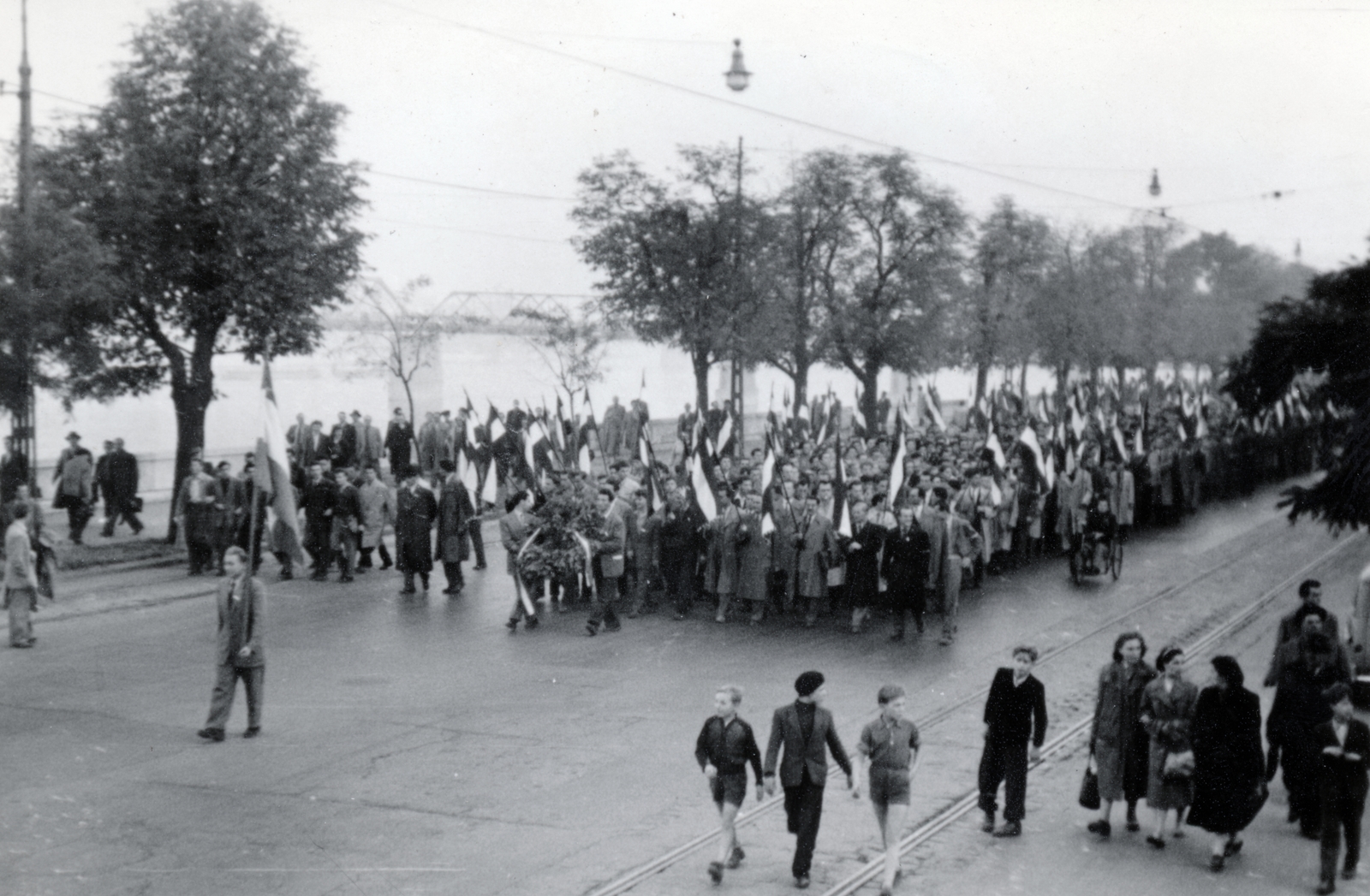
The procession of university students towards Bem József Square on 23 October 1956 (Source: Fortepan/Reference No.: 222375)
23 October began as a peaceful demonstration, which many people joined in the afternoon and evening. The youth was almost absorbed by the events of the afternoon, from which they hoped for changes everywhere in the country. "No, I did not go there like a conscious revolutionary, but somehow my feet and enthusiasm took me there because they came hand in hand," is how the recently deceased Mária Wittner, who later became a freedom fighter, recalled this emblematic day.
The demonstration, which was still banned and then permitted, started from the University of Technology, and the crowd of students, university and college students marched to the Bem Statue as a symbol of solidarity with the Poles - where similar movements took place. The crowd gathering at the Petőfi Statue in Pest also arrived here. After the demonstration, some people already went to the Radio building to give more publicity to the 16 points formulated at the University of Technology, containing their basic demands against the oppressive system, and to read them out on the Radio. However, this was refused by the management of the Radio on the instructions of the party leadership.
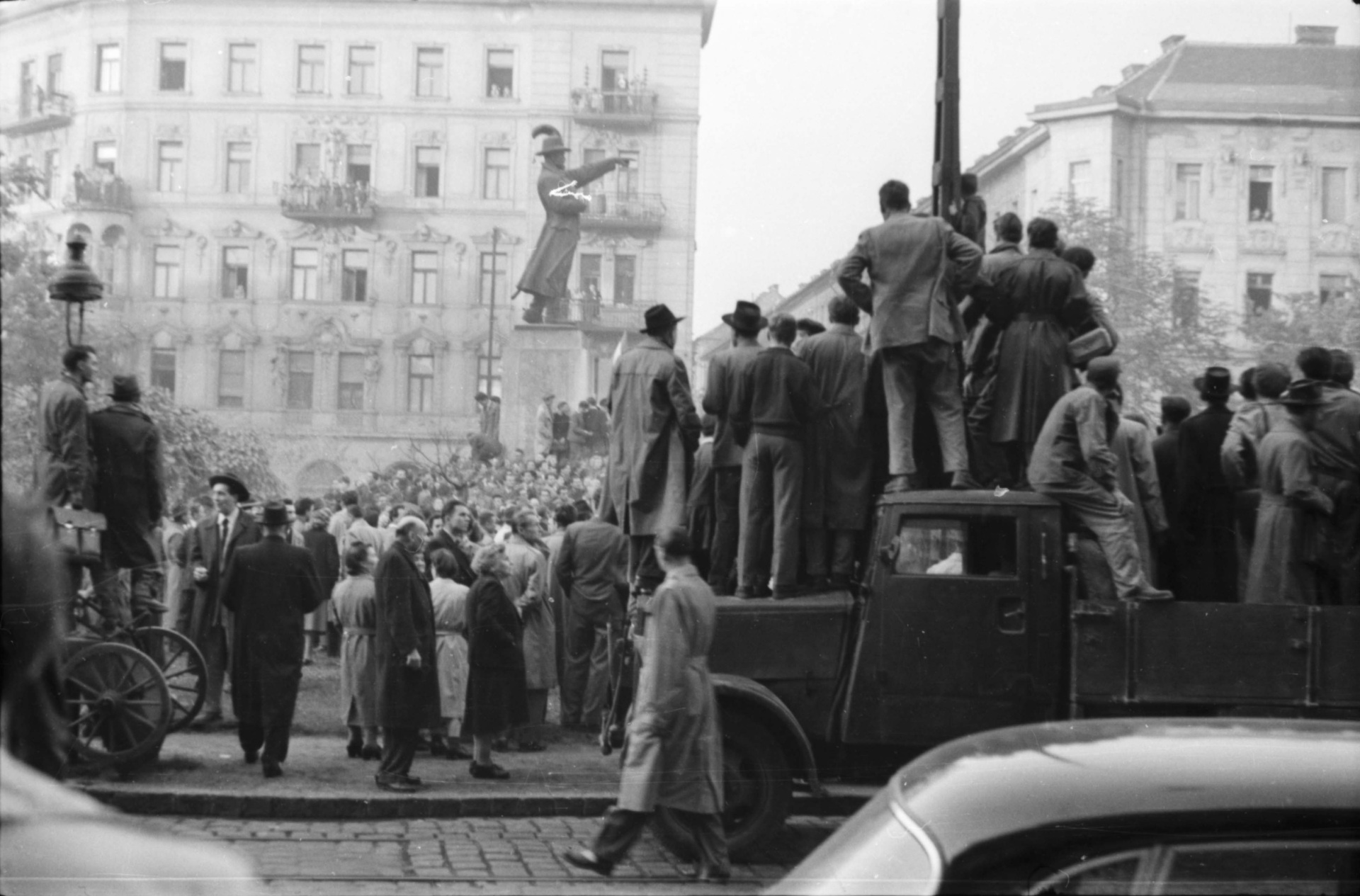
Demonstration at the Bem Statue on 23 October (Source: Fortepan/Reference No.: 128728)
By the evening, a huge crowd had gathered at the Radio building, and as Attila Batár described it, this "crowd had a unified atmosphere! The one which, in its heart and behaviour, was done with the whole system." All of this stemmed from people's desire for freedom and the often unbearable, difficult, horrible and inhumane living conditions and the lies of the system.
Armed forces, and State Protection Authorities (ÁVH), were sent to reinforce the Radio already in the afternoon, whose number swelled to approximately 260-280 people. In the course of the evening, additional military formations came to the aid of the defenders, some of whom the demonstrators partly disarmed, and partly tried to convince them of the legitimacy of their demands and the real situation. Several of the soldiers joined the besiegers, including the armoured soldiers from Piliscsaba who later died in the siege, whose memory is preserved today by a plaque on the wall of the former Radio building.
A work of art on the wall of the Radio building commemorating the armoured soldiers from Piliscsaba who participated and died in the siege of the Radio, a work of Béla Mónus made in 2004 (Photo: Zsolt Dubniczky/pestbuda.hu)
The inscription on the plaque with the names of the soldiers visible under the artwork of Béla Mónus (Photo: Zsolt Dubniczky/pestbuda.hu)
The first alarm shots were fired around 7:45 p.m., and the demonstration turned into an armed uprising when one of the participants in the protesting crowd was fatally shot around 9 p.m. "He's been shot to death" was the cry, which, in addition to fear and panic, gave rise to a counter-reaction and retaliation, and unleashed terrible energies, which quickly spread throughout the city. Upon hearing the news, demonstrators standing in other parts of the city rushed to the Radio building. Several people obtained weapons from the nearby Kilián Barracks, but machine pistols and rifles also came from other places.
The events took place with incredible speed, in which the majority of people on the street knew almost instinctively what to do. In the meantime, the news that "ÁVH people are killing young people" quickly spread in the city, which further fueled the mood. A truck full of armed men arrived at the Radio's studio on Bródy Sándor Street, where the irreversible armed struggle and the fierce and bloody siege of the building, which lasted until the next morning, began.
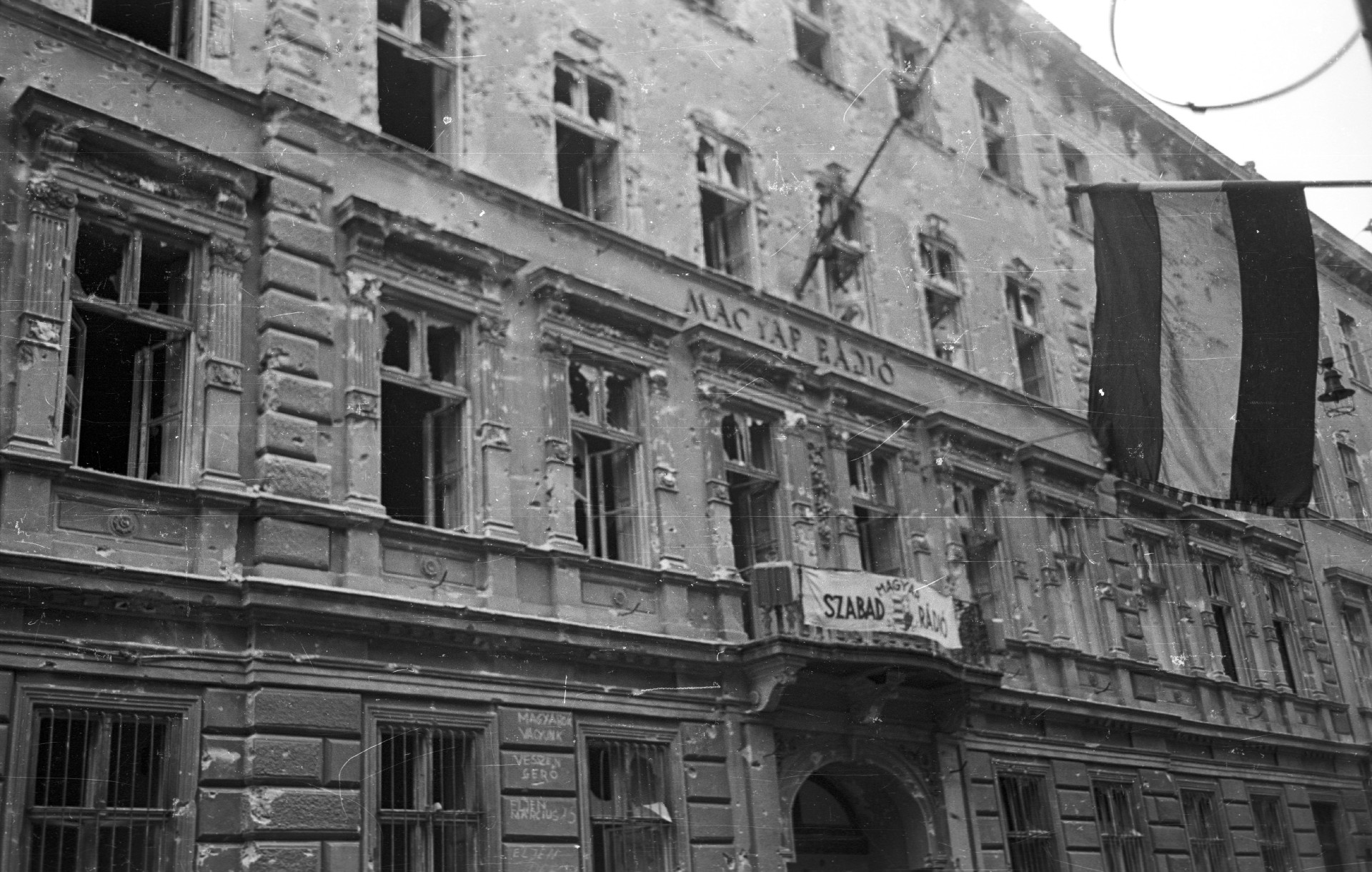
Hungarian Radio's building at 5-7 Bródy Sándor Street after the night siege of the Radio on 23 October. The windows that have been shot out all the way show the heated and fierce battles (Source: Fortepan/Reference No.: 39979)
.jpg)
"Where there was a flash, there the man shot" - the windows of the liquidated resistance on the Radio building (Source: Fortepan/Reference No.: 39980)
Some of the insurgents set up their firing positions in the attics and roofs of the opposite houses, at the base of the chimneys, from which the armed forces protecting the Radio could easily be fired upon. Fierce shooting continued throughout the night, nothing could be seen in the darkness but the flash of weapons. "Where there was a flash, there was a shot," is how one of the insurgents described this seemingly simple situation.
The forces protecting the Radio not only shot at the opposite houses and armed men but - according to witnesses - also aimed at the crowd. The wounded were treated and transported in ambulances. But in some ambulances, additional ÁVH people came to help the defenders, but they were quickly caught in the crowd. The already mentioned Mária Wittner herself was there throughout the siege of the Radio until it was captured. She also saw “the action when the ambulance was stopped. It became suspicious that it brought weapons in through the back gate of the Radio."
.jpg)
The corner of Bródy Sándor Street and Pollack Mihály Square, probably on the day after the siege (Source: Fortepan/Reference No.: 146994)
On the morning of 24 October, it was already dusk and dawn, when the besiegers managed to break into the Radio building, and the insurgents were already listening to Imre Nagy's radio speech - from the studio moved to the Parliament - at 8:45 in the morning in the courtyard of the building. When they entered the building, they were greeted by a shocking sight. The Radio's yard "looked as if it was not the Radio's yard, but an arms factory's yard, weapons were lying all over the place. From now on, only those who didn't want to didn't carry a weapon with them."
On this day, many armed insurgents could already be seen at Budapest's busiest junctions, who fought against incoming Soviet armoured personnel carriers with breathtaking audacity. The armed centres that became the city's important defensive locations in the coming days were formed at strategically important points in Budapest: Corvin Lane and its surroundings in Pest, as well as the area around Baross Square, Móricz Zsigmond Square and Széna Square in Buda, and in the outer districts in Pesterzsébet, Csepel and Újpest.
No one expected that a brave and determined armed resistance would unfold in Hungary against the strongest land army in the world at the time. But still, this miracle happened! The workers and the youth, the guys and girls of Pest, who were the backbone of the system, took up arms to defend freedom in an unequal fight.
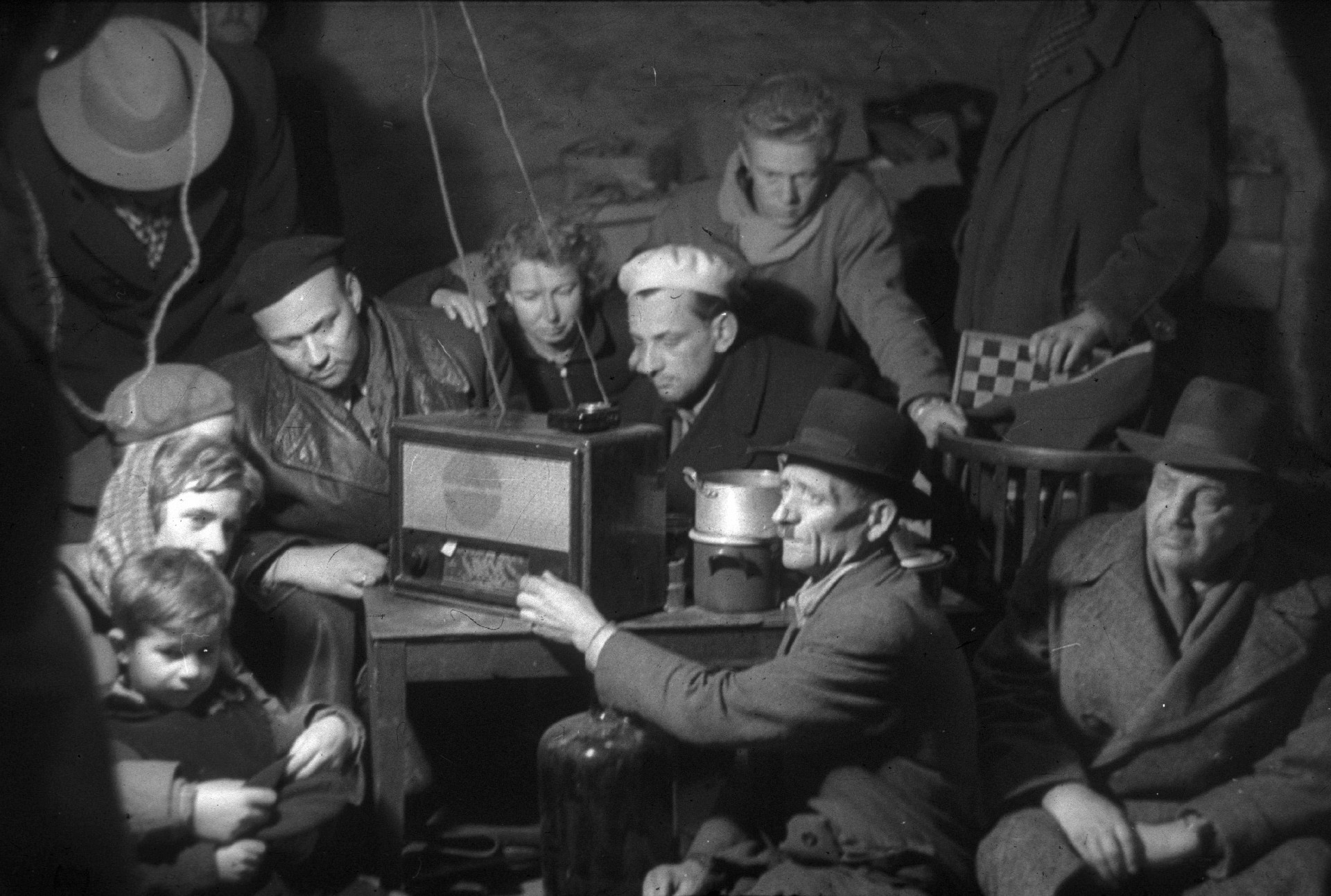
People listening to Hungarian Radio in a basement during the revolution (Source: Fortepan/Reference No.: 40141)
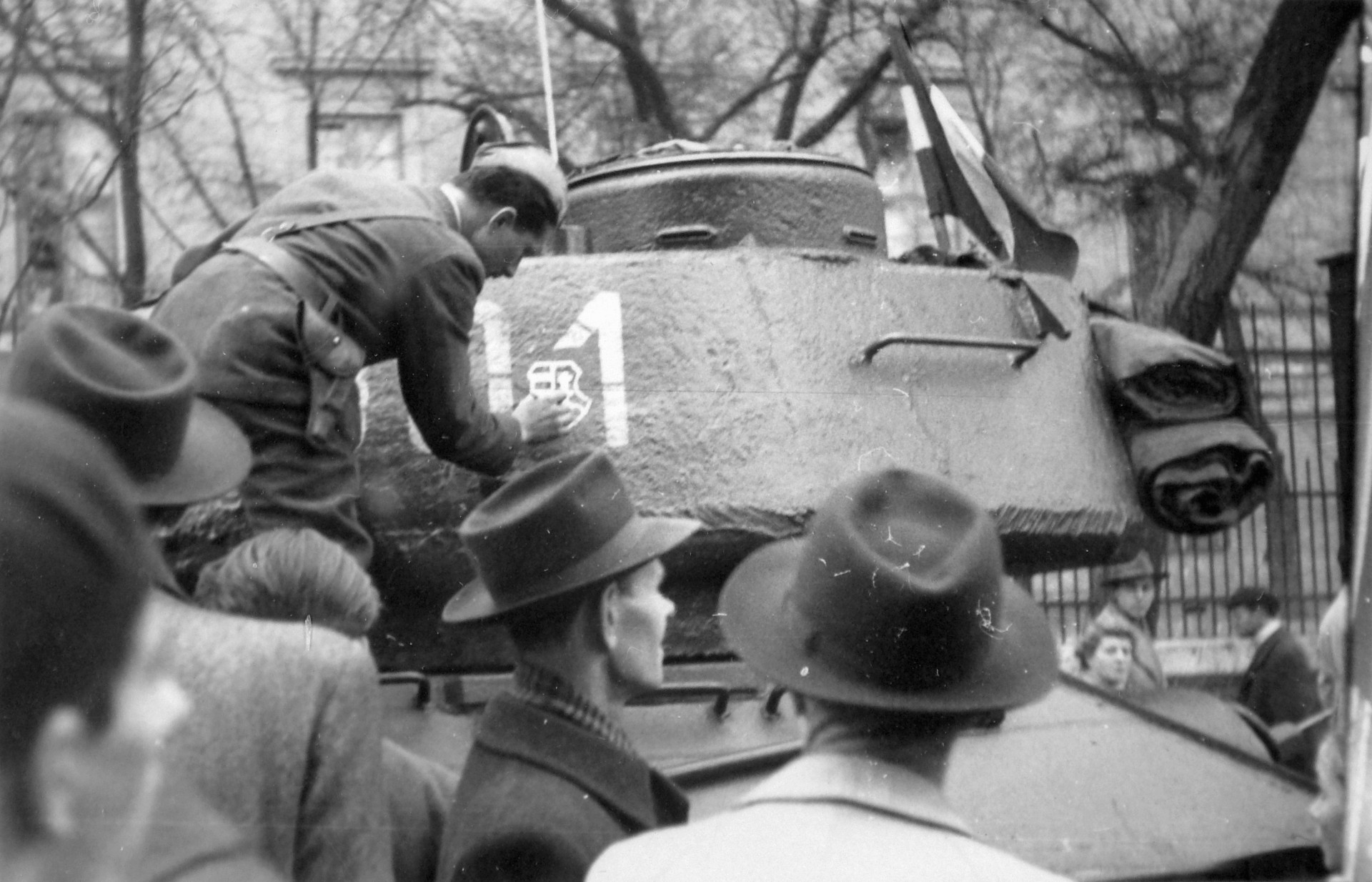
The Hungarian coat of arms signifies freedom on the side of an armoured tank in Pollack Mihály Square (Source: Fortepan/Reference No.: 12337)
Another plaque can be seen on the former building of the Radio today, commemorating the deaths of the armed crowd protesting at the Radio (Photo: Zsolt Dubniczky/pestbuda.hu)
Cover photo: Hungarian Radio's building at 5-7 Bródy Sándor Street after the night siege of the Radio on 23 October. The windows that have been shot out all the way show the heated and fierce battles (Source: Fortepan/Reference No.: 39979)
RELATED ARTICLES:
The Party Office on the former Köztársaság Square does not allow the past to be sealed off

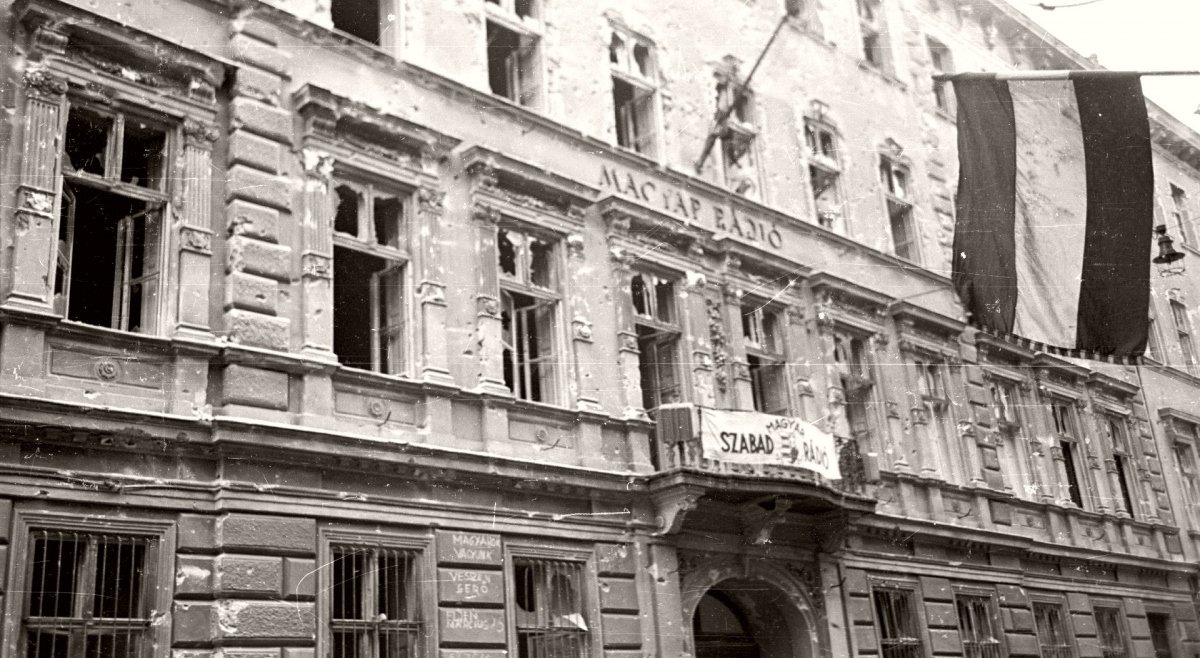


































Hozzászólások
Log in or register to comment!
Login Registration